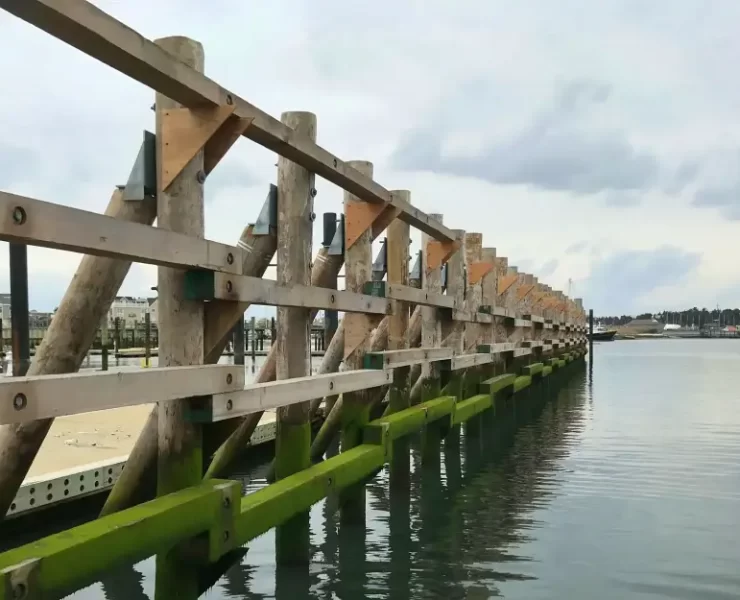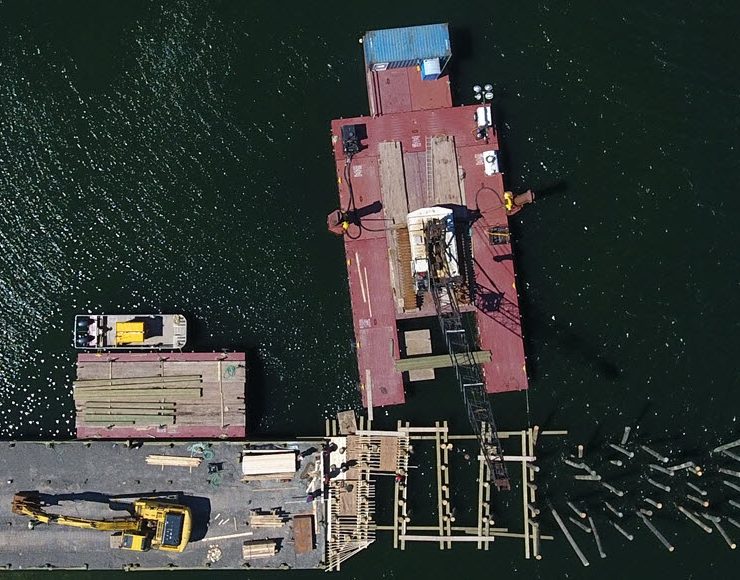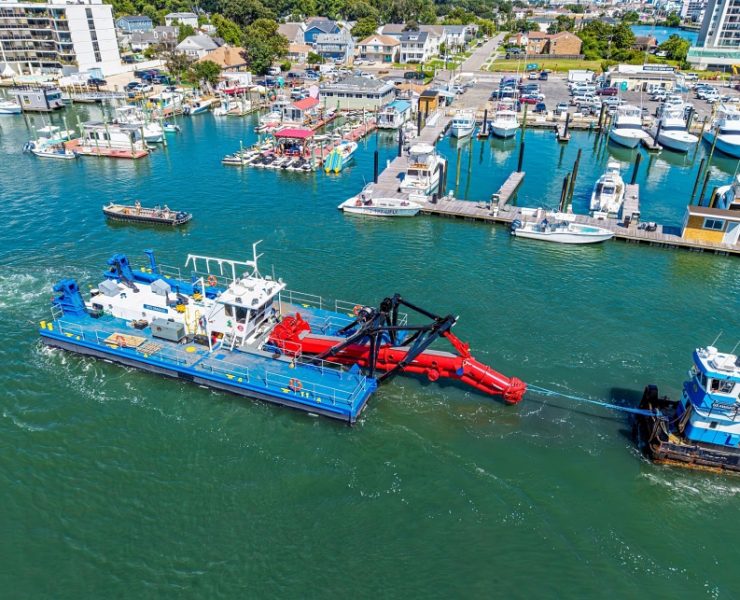The Design of Coastal Revetments, Seawalls, and Bulkheads
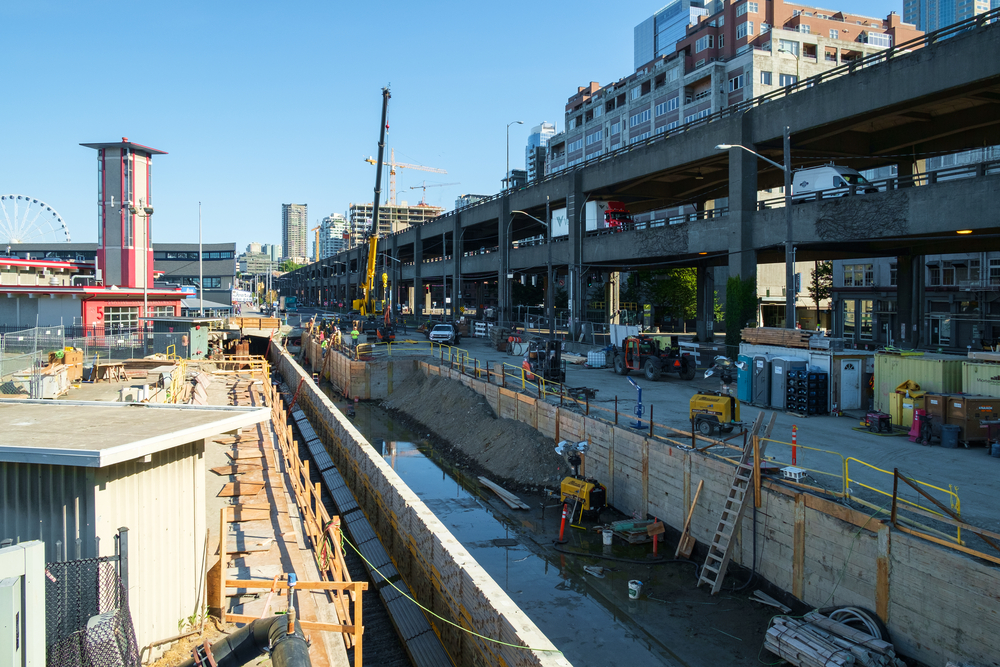

Along bluffs and coastal shorelines, various structures are often necessary to protect beaches from wave action, or to retain fill or in situ soil. There are three primary structure types that can be utilized to accomplish these goals, including protective materials laid on slopes, known as revetments, and vertical structures, which are classified as either seawalls or bulkheads.
Revetments are typically constructed of stone or other durable materials to provide protection for designated slopes. They are built with an armor layer, a filter layer or layers, and toe protection. The armor layer can consist of interlocking structural elements designed to form a geometric pattern, or a random mass or stone or concrete rubble. Next, a filter layer will ensure drainage and protection of the underlying soil. Finally, toe protection will offer stability against undermining at the base of the revetment.
While bulkheads and seawalls are both types of vertical structures used to protect coasts, they have different purposes. Bulkheads are used to retain or prevent the sliding of land, with protection of the upland area from wave action as a secondary consideration. In contrast, the primary purpose of seawalls is to intercept waves. Bulkheads can be cantilevered, anchored, or gravity structures, with their use limited to areas where wave action can be resisted by the types of materials used in these respective designs (such as sheet piling or rock-filled timber cribs). For areas where intense wave action exists, massive concrete seawalls are the more appropriate choice, with either a vertical, concave, or stepped seaward face.
While revetments, bulkheads, and seawalls do provide protection for the upland area behind them, they can each reflect waves and erode the beach that fronts them. This is particularly an issue for vertical structures such as bulkheads and seawalls that are nearly perfect wave reflectors. Curved, stepped, and rough inclined structures that absorb or dissipate wave energy can reduce the potential for erosion.
Designing a Protective Coastal Structure
Determining which structure will best suit a particular coastline requires an analysis of a variety of factors, including how a particular shoreline is used. For example, if a beach is used for recreation, a revetment made with randomly placed stone may make access difficult, while a revetment made with concrete blocks may not impede walkers. Similarly, seawalls and bulkheads can create access problems that may require the building of stairs to ensure that beachgoers can still reach the coast.
Another factor that must be taken into consideration when choosing the proper coastal structure is the form and composition of the shoreline. Bluff shorelines composed of cohesive or granular materials may fail due to slope instabilities or scour at the toe; cantilevered or anchored bulkheads can protect against toe scour and sliding along subsurface critical failure planes. The height of a bluff must also be taken into consideration when designing a bulkhead or seawall, as it will determine the magnitude of earth pressures that must be resisted. On beach shorelines, revetments, seawalls, and bulkheads can all be used to protect back shore developments; however, care should be taken to ensure that such structures do not erode the beach itself.
Engineers should also consider the seasonal variation of shoreline profiles, which often include beach growth in the summer and recession in the winter. Design should encompass the greatest conditions for which damage prevention is claimed in the project plan, with an ability to withstand (at a minimum) conditions which have a 50 percent probability of being exceeded during the project’s economic life. If the project fails during maximum conditions, it should not result in a catastrophe—such as any loss of life or a substantial loss of money.
One of the more complex design factors that must be considered is the maximum water level and breaking wave height expected at the structure’s location, along with the amount of run-up and the required crest elevation of the structure. Engineers should also assess the minimum expected water levels in order to anticipate the amount of toe scour that may occur, and plan accordingly with regards to the armor layer depth. To make these calculations, engineers should look to a number of items, including astronomical tides, storm surges, and lake levels (where applicable).
The height and period of waves that will act on the structure must also be factored into the decision of whether to build a revetment, seawall, or bulkhead, and how to build the relevant structure. This consideration ahead of time will help to maximize the economic life and structural integrity of the structure, and reduce the risk of hazards from events. An analysis of wave gauge records, visual observations of wave action and published wave hindcasts, wave forecasts, or the maximum breaking wave at the site can all be utilized to make a design wave estimation that takes into account both extreme high and low design water levels, as well as critical design conditions. Shore protection structures should generally be designed to prevent wave overtopping, except in cases where it is cost-prohibitive to do so. In that case, it may be necessary to estimate the volume of water that may overtop the structure and take this factor into account in the final design.
There are generally two competing interests in coastal structure design: stability and flexibility, with the ideal structure having a combination of both. Large monolithic structures, such as concrete seawalls, have superior strength and stability, but lack flexibility. This may lead to premature failure due to toe scour or differential settlement. In contrast, randomly placed rock or concrete armor units will experience settlement and readjustment under wave attack, and will not fail catastrophically if minor damages are inflicted. They tend to have reserve strength over design conditions, which is the ability to adjust and resettle under wave conditions. Structures built of regular or uniformly placed units have little or no reserve stability, while randomly placed units have greater reserve stability.
Toe protection is an important part of any structure’s overall design, and involves armoring the base of a structure to prevent waves from scouring and undercutting it. Wave breaking, wave run-up and backwash, wave reflection, and grain-size distribution of the beach all impact the severity of toe scour. The stability of the toe of any structure is critical, as its failure will cause the entire structure to fail. For revetments, toe protection is governed by hydraulic criteria, with waves and wave-induced currents being the most important factors. For seawalls and bulkheads, designs should consider both geotechnical as well as hydraulic factors. Cantilevered bulkheads, anchored bulkheads, and gravity walls each depend on soil in the toe area for support.
The filter is a transitional layer of gravel, small stone or fabric that is placed between the soil and coastal structure. Constructed properly, a filter prevents the migration of fine soil particles through voids in the structure, permits relief of hydrostatic pressures with soils, and distributes the weight of the armor units. Above the water line, filters also prevent erosion beneath the riprap.
Flank protection is required to reduce the potential for erosion around the ends of a structure. To prevent erosion, return sections are constructed, such as sheet-piles or thickened end sections.
There are many other factors that should be taken into consideration when designing a coastal structure. For areas where corrosion may be a problem, such as where water is brackish or there is salt water, corrosion-resistant steel or aluminum can be utilized as necessary. Additionally, fasteners should be made from corrosion-resistant materials. In areas with cold weather, concrete should be designed for freeze-thaw resistance. Timber to be used in marine construction should be treated with creosote or with water-borne preservative salts to protect against damage from marine borers. If fabric is to be used in construction, it should be treated to protect against ultraviolet light.
Revetments
A revetment is a facing built on an embankment, slope, or other shoreline feature to protect it from erosion. It is made of erosion-resistant material, and consists of an armor layer, filter, and toe. The armor layer provides protection against wave action, while the filter layer supports the armor and allows water to pass through the structure while simultaneously preventing soil from being washed away. Toe protection prevents the seaward edge of the revetment from being displaced.
The armor of a revetment can be either rigid or flexible, as seen respectively with concrete slabs-on-grade (rigid) or riprap and quarry stone (flexible). Rigid armors are larger, but less able to accommodate settlement and adjustment, and they have less reserve strength than flexible armors.
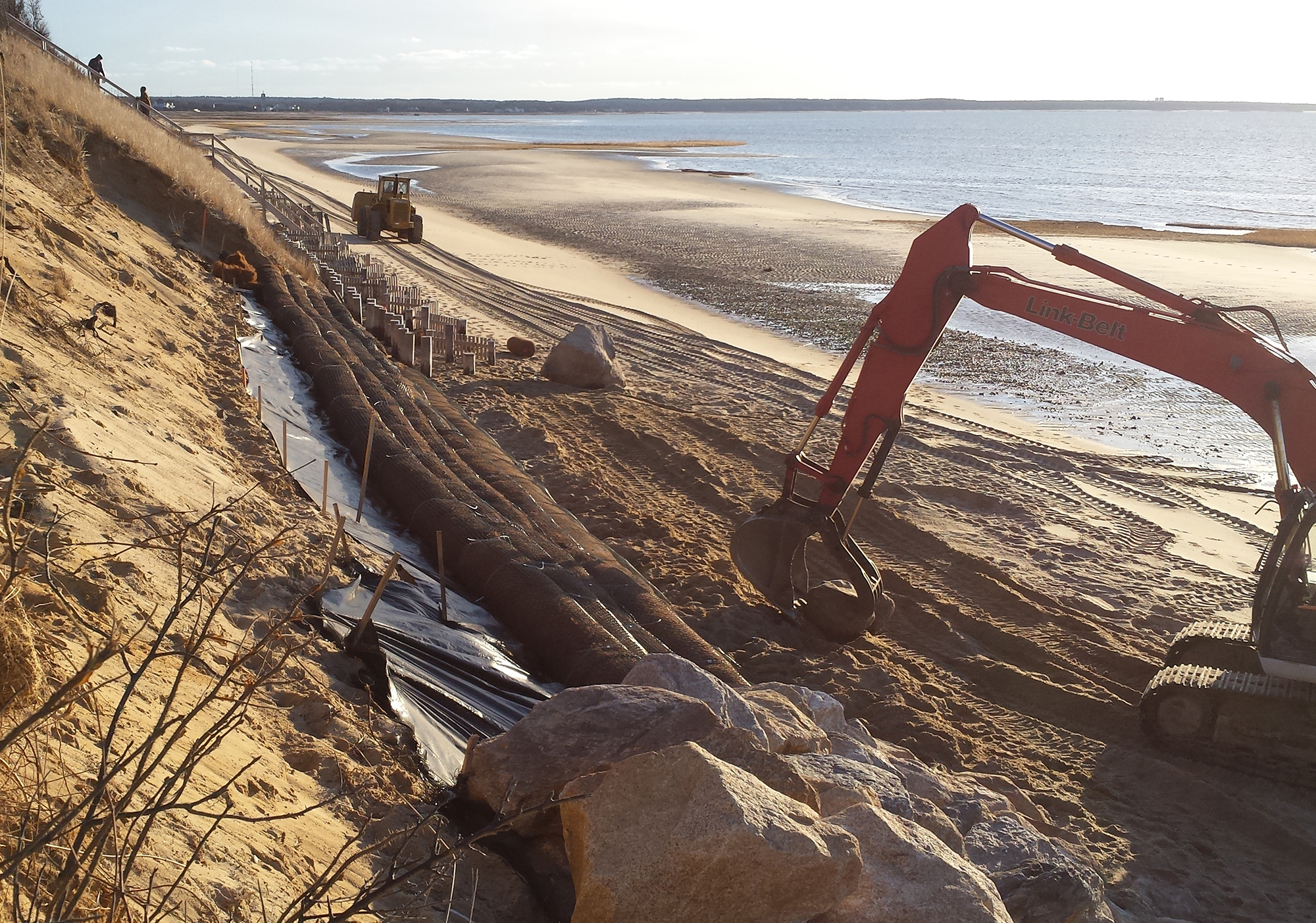
Seawalls
Seawalls are large structures designed to resist wave action along coastal property. They can either be pile-supported or gravity supported structures, and are typically built from either concrete or stone. Seawalls often have sloping, stepped, or non re-entrant or re-entrant face walls.
Concrete seawalls are usually supported by piles, with sheet pile cutoff walls at the toes to prevent piles from being undermined. Also, rock toe protection may be used to provide additional stability. The seaward face of a concrete seawall may be recurved, vertical, or stepped. Rubbled-mound seawalls are designed like breakwaters, using a rock size that is chosen to maximize stability against expected wave action.
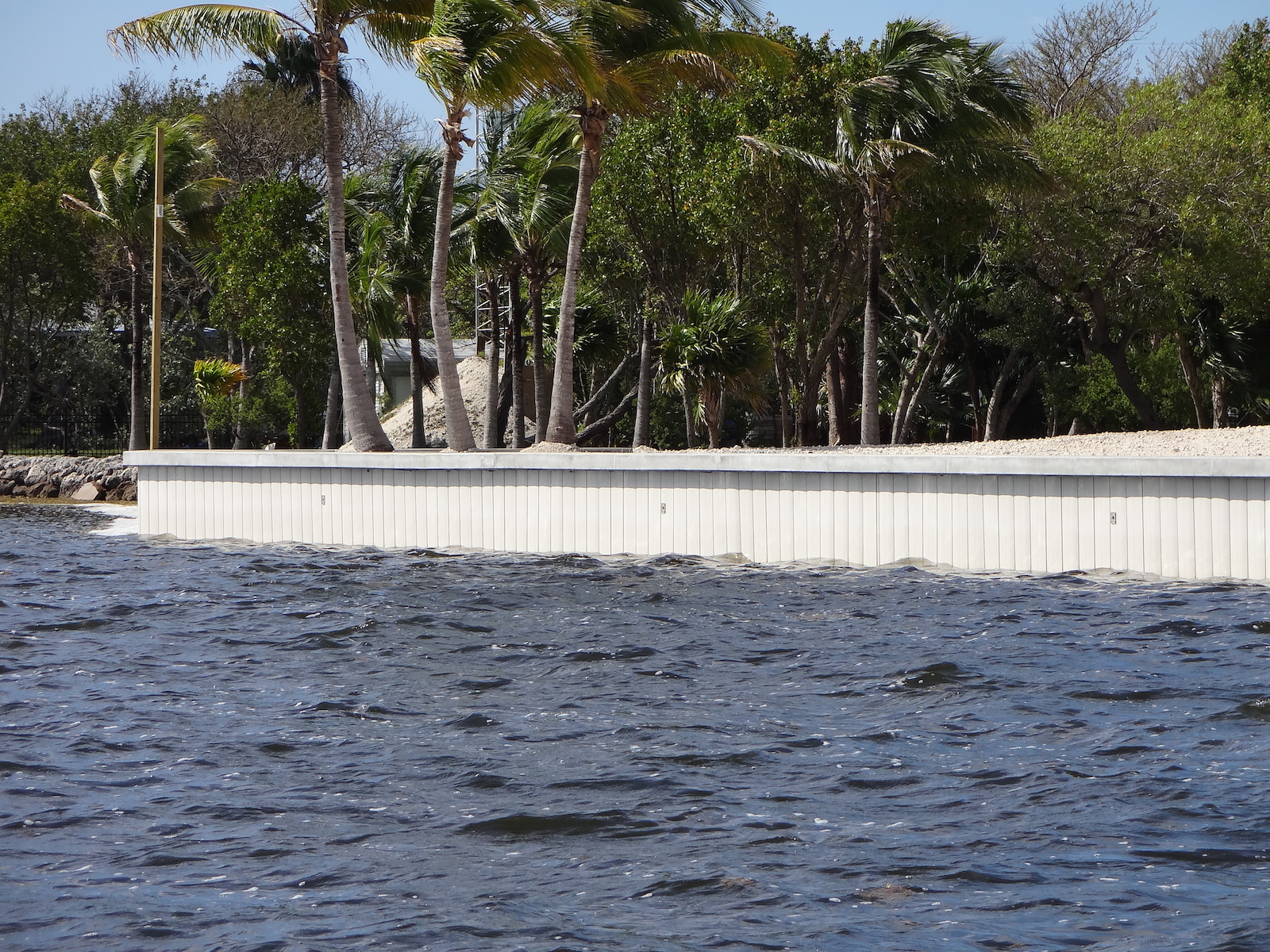
Bulkheads
Bulkheads are retaining walls designed to prevent backfill from sliding while also providing protection from light or moderate wave action. They can be used to protect eroding bluffs through retaining soil at the toe, or by protecting the toe from erosion and undercutting. Bulkheads may also be used for reclamation projects, where a fill is needed on the seaward side of the existing shore, and for marinas and other locations where deep water is needed directly at the shore.
Bulkheads can either be cantilevered or anchored sheet piling, or gravity structures. If cantilevered, bulkheads require adequate embedment for stability, and are primarily utilized where wall heights are low. If there is toe scour, embedment is usually ineffective and failure can result. Anchored bulkheads are generally used where greater heights are needed; embedment is also necessary for stability, but toe scour is less of an issue in these cases. Gravity structures eliminate the cost of pile driving and can often be utilized where subsurface conditions prevent pile driving. Gravity bulkheads require strong foundation soils to support their weight.
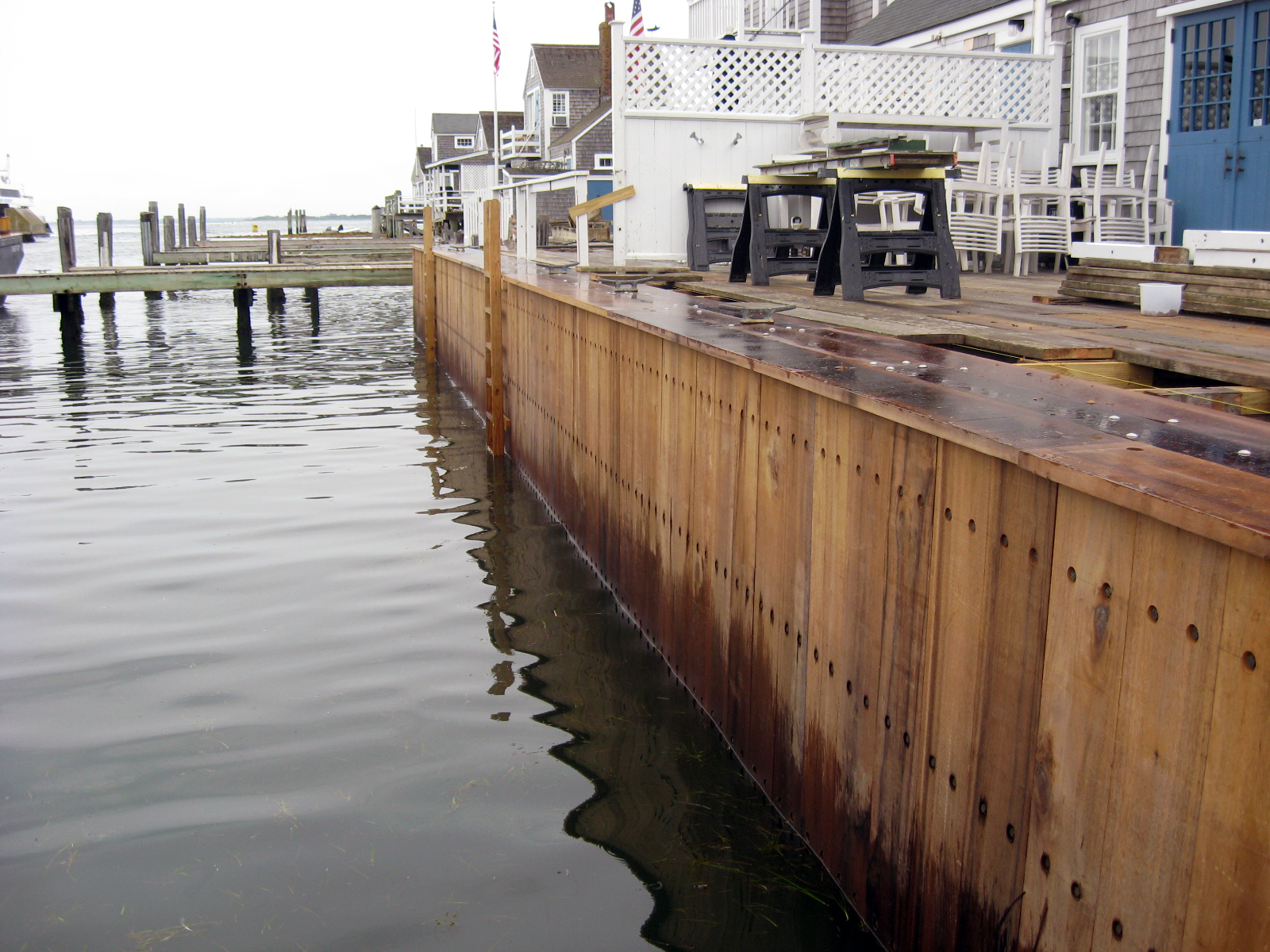
Assessing Environmental Impacts
The potential environmental impact of a proposed coastal protection structure should be evaluated along with engineering and structural factors in a project’s design. The construction of a coastal structure can have both short-term and long-term environmental impacts on a coastline, and should be thoroughly assessed before undertaking any project.
Initially, the physical impact on the littoral system—the movement of sediment along a shoreline—should be analyzed. The littoral system on a coastline is always moving towards a state of dynamic equilibrium. A change in the coastal shoreline, such as will be seen in the building of a revetment, bulkhead, or seawall, can result in erosion or increased wave reflection or turbulence along adjacent shorelines. The potential impact of a coastal structure on the littoral system of adjoining should be carefully considered prior to beginning a project.
Next, a coastal structure can impact the quality of water in a given area, both during construction and after completion of such a structure. During construction, there may be increased suspended solids in the water. This phenomenon is usually limited to the construction site and dissipates rapidly after a project has ended. After completion, there may be altered circulation of water caused by the structure. An assessment that predicts how water circulation will change, including effects on the salinity, temperature, and velocity of the water, should be conducted to assess the environmental impact of the project.
Short-term impacts of construction should also be considered, particularly as they relate to nesting and feeding waterfowl and fish. If possible, construction should be timed to prevent disruption of nesting, spawning, and migration periods. Long-term impacts may be harder to predict; while certain structures may eliminate the habitat for some species, they can at the same time benefit others through offering a greater intertidal zone or a larger upland environment. A variety of design alternatives should be considered to minimize potential disruptions to wildlife and the environment.
Finally, the overall design aesthetic should be considered in relation to the use of the land. The visual impact of the structure is a critical part of its overall design, although it is less important if it will be constructed in an area where few people will see it. However, if it will be constructed in a recreational, high-value or populated area, then the overall look of the structure will be a vital consideration in the process of evaluating coastal structure design options.
What are the key factors to consider when choosing between a revetment, seawall, or bulkhead for coastal protection?
The choice depends on factors such as beach use, shoreline composition, seasonal variations, wave forces, and water level considerations.
How do revetments, seawalls, and bulkheads impact the environment, and what considerations should be made to minimize their environmental impact?
Coastal structures can affect the littoral system, water quality, and biological aspects. Timing construction to avoid disruption to wildlife, assessing water circulation changes, and considering design alternatives are crucial for minimizing environmental impact.














